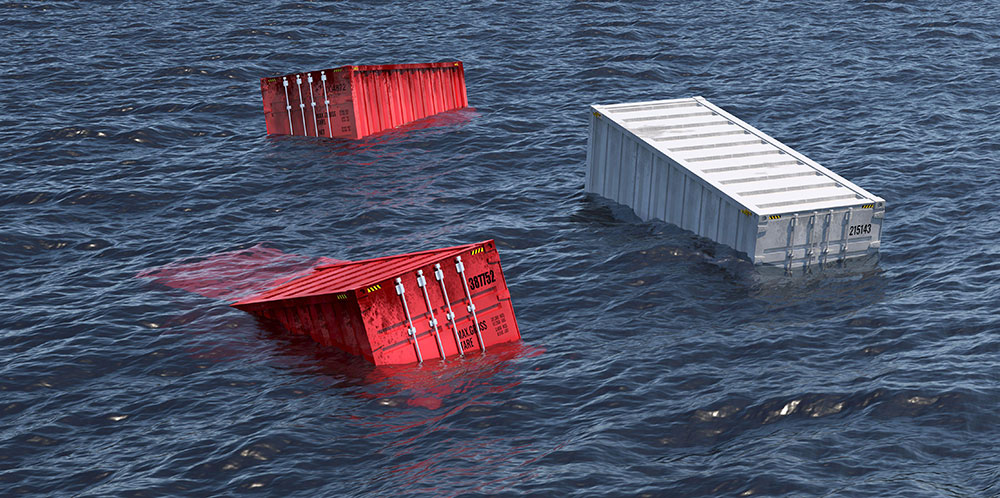Advances in weather analytics and technology open up new opportunities for maritime organizations to enhance how they monitor and navigate weather conditions.
Due to the dynamic nature of weather, monitoring and managing it effectively is one of the biggest challenges for shipping and offshore organizations. However, using real-time weather data can improve routing, help companies analyze operations, improve efficiencies, and even unlock competitive advantages.
Extreme weather conditions are increasingly challenging the maritime industry. Research shows that not only are winds and wave heights increasing, but also wave periods and the direction of waves are changing, particularly in the Southern Ocean. The biggest driver of these conditions is upper-ocean warming, a consequence of anthropogenic global warming. This is changing the global oceanic climate and making it more challenging for safe voyages. The warmer sea surface temperatures have also likely contributed to earlier and more frequent hurricanes and stronger typhoons, both of which affect shipping routes around the world.
First and foremost, safety is a concern in extreme weather conditions. Strong winds, high wave heights and vessel rolling can be life-threatening for the crew onboard. Extreme weather also has financial implications. According to The Swedish Club 2020 loss prevention report, heavy weather is cited in half of all claims and contributes to 80 percent of the financial losses on cargo ships. Early awareness is key to protecting those onboard and preventing any costly loss because of severe weather.

Today, weather optimized routing is the best tool for helping ships minimize risk. This solution enables confident decision-making before and during voyages based upon weather forecasts, oceanic data, and vessel’s position on a particular day and time. If there is bad weather ahead, a routing algorithm makes numerous calculations and provides one or more alternatives for the Master to optimize a route. Weather impacts around 80% of vessel performance, so any errors can significantly change a vessel’s ETA, causing potential delays and increased operating costs.
The biggest innovation on the horizon for minimizing voyage risk is vessel motion forecasting. Currently, wind strength and wave heights are key measurable metrics for safe seakeeping but analyzing the wave spectra is a critical next step for making smart decisions. Wave energy in the ocean covers a 2D spectrum of different directions, frequencies, and energies. For example, the wave height at a given location and time could be the build up of swells from three different directions, with three different frequencies, and three different swell heights. One, two, or all of these swells could impact vessel performance and operational efficiencies.
Vessel motion forecasting uses wave spectra with a ship’s design parameters to predict the ship’s motions and the impact of the entire sea state on the vessel. For example, parametric rolling, which is a main reason for container loss, can be accounted for when modeling motions using wave spectra, with the design of the ship and cargo. Knowing where and the timing of the sea state and wave spectra that can cause significant rolling is very important for planning routes and avoiding potentially dangerous oceanic conditions.
Innovations like vessel motion forecasting are only possible due to recent advances in ship digitalization.
For example, a marine forecast suite of products produces terabytes of information for a single wave forecast. Combined with an ensemble of global oceanic, atmospheric and proprietary models these data would normally be too robust for operating systems. With an API, the data can be processed and stored in a cloud-based solution and users can access only the information they need on demand within their existing onboard or shore-based systems. The flexibility of an API means mariners can choose when they need high resolution data, such as in shallow water where cross currents and weather conditions are more volatile, or an overview in deeper waters. Digitalization in shipping helps make it possible to convert big data into smart, actionable data when and where it is needed, eliminating the “either/or” situation.
The future of optimized shipping is bright when weather fuels operational intelligence. Forecasting, weather analytics and advanced models can optimize the vessel’s performance during the voyage, increasing efficiency and profit. And, when it comes to navigating heavy weather, these same data can aid in critical seakeeping decisions, keeping crew and cargo safe. It’s a turbulent time for the world right now, but the potential benefits of integrating weather data are already helping solve many of the industry’s biggest and most common challenges.

Mike Eilts
About Mike Eilts
Mike Eilts, DTN Senior Vice President – Weather, is responsible for bringing weather solutions to customers around the world. As a scientist and entrepreneur, he understands the critical need to bridge weather analytics with technology to deliver innovative solutions that solve industry challenges. He co-founded a private weather company and served in leadership positions at the National Severe Storms Laboratory. Mike has written more than 75 papers in meteorological journals and conference proceedings. He is an American Meteorological Society Fellow and a Senior Executive Fellow of the Harvard Kennedy School of Government. He has an MBA, as well as Master and Bachelor of Science degrees in Meteorology, all from the University of Oklahoma.
In this episode, I sat down with Beejan Giga, Director | Partner and Caleb Emerson, Senior Results Manager at Carpedia International. We discussed the insights behind their recent Industry Today article, “Thinking Three Moves Ahead” and together we explored how manufacturers can plan more strategically, align with their suppliers, and build the operational discipline needed to support intentional, sustainable growth. It was a conversation packed with practical perspectives on navigating a fast-changing industry landscape.